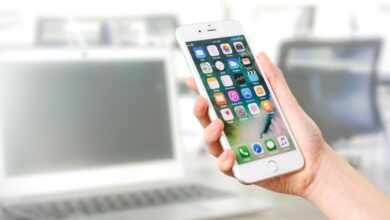iOS 16.3.1 Battery Drain Issue

Introduction iOS 16.3.1 Battery Drain
In today’s digital age, smartphones have become an integral part of our lives, and battery life is a critical aspect of our mobile experience. Apple’s iOS is renowned for its efficiency and optimization, but even the most reliable operating systems can sometimes face issues. One such problem that has emerged in iOS 16.3.1 is battery drain. In this article, we will delve into the possible causes of the iOS 16.3.1 battery drain issue and explore potential solutions.
Background on iOS 16.3.1
iOS 16.3.1 Battery Drain is one of the latest iterations of Apple’s operating system, designed to enhance user experience and address any existing bugs or vulnerabilities. However, like any software update, it can introduce unexpected issues. Battery drain, in particular, has been reported by a significant number of users after updating to iOS 16.3.1.
Potential Causes of Battery Drain
One possible cause of the battery drain issue in iOS 16.3.1 is increased background app activity. Some apps might not be optimized to work efficiently with the latest iOS version, leading to excessive battery consumption. Apps running in the background may continue to use system resources, such as GPS, push notifications, or background refresh, resulting in increased power consumption.
System Services
Certain system services, such as location tracking, can also contribute to battery drain. iOS 16.3.1 introduces new features and improvements, which might require more frequent location access to provide accurate information to users. However, this increased usage can lead to accelerated battery consumption if not properly managed.
Software Bugs
Despite extensive testing, it is not uncommon for software updates to contain bugs. In the case of iOS 16.3.1, battery drain might be caused by undiscovered software glitches or compatibility issues with specific device models. These bugs can prevent the efficient utilization of system resources, leading to unnecessary battery drain.
Battery Health and Usage Patterns
It’s important to consider that battery drain issues may not solely be attributed to the iOS update itself. Factors such as battery health, usage patterns, and third-party apps can also contribute to battery drain. Aging batteries or power-hungry apps running in the background can exacerbate the problem, even in the absence of any iOS update.
Close Background Apps
To conserve battery life, users can manually close unnecessary apps running in the background. Double-press the home button (or swipe up from the bottom on devices without a home button) and swipe away the apps you don’t need. This action prevents these apps from using system resources and consequently saves battery power.
Disable Unnecessary System Services
Users can also optimize battery life by disabling unnecessary system services. Go to “Settings” > “Privacy” > “Location Services” to review the apps using location services. Disable location access for apps that don’t require it constantly. Similarly, navigate to “Settings” > “Notifications” to customize push notifications for individual apps, reducing their impact on battery life.
Update Apps
It is crucial to keep all apps up to date, as developers often release compatibility updates to address battery-related issues. Visit the App Store and check for any pending updates. By ensuring that apps are running the latest versions, users can take advantage of bug fixes and optimizations that improve battery efficiency.
Reset Settings
If the battery drain issue persists, a reset of the device’s settings may help. Go to “Settings” > “General” > “Reset” and select “Reset All Settings.” This action resets all system settings to their default values, without affecting personal data. Although this may require reconfiguring some preferences, it can resolve any misconfigurations that might be causing battery drain.
Battery Health and Replacement
If the device’s battery health has significantly degraded, it may be necessary to replace the battery. iPhones provide battery health information under “Settings” > “Battery” > “Battery Health.” If the maximum capacity is low (e.g., below 80%), consider contacting Apple Support or an authorized service provider for assistance.
Conclusion
Battery drain issues can be frustrating, especially after updating to the latest iOS version. In the case of iOS 16.3.1 Battery Drain, several factors may contribute to increased battery consumption, including background app activity, system services, software bugs, and device-specific factors. By following the potential solutions outlined in this article, users can mitigate battery drain and optimize their device’s performance. Apple continuously strives to improve iOS, and future updates may address these issues to enhance user experience and prolong battery life.




